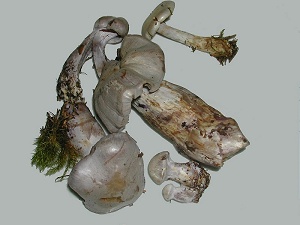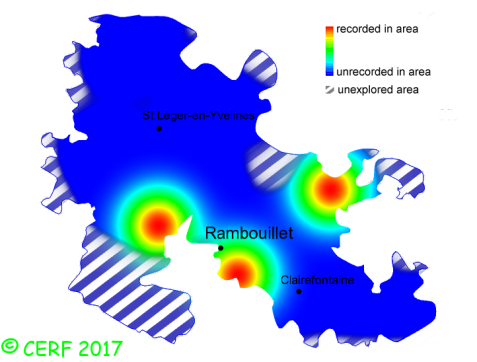| Cortinarius camphoratus (Fr.) Fr. |
|
|
|
|
|
|
The cap is pale blue to lilac grey, progressively getting ochraceous starting from the centre, hemispherical, then convex to expanded; its margin is smooth, thin, inrolled a long time. The cap surface is smooth, silky, fibrillose, matt. The stem is cylindrical, sometimes swollen at the base, lilac-violet at first, whitish then eventually ochraceous, especially at the base, with an abundant cortina, white in the youth. The flesh is whitish to violet, then ochraceous (especially in stem base), unchanging; its taste is mild to unpleasant; the odour is strong and unpleasant, and according to authors, of burnt horn, billy goat, sweaty feet, cheese, cold mashed potatoes, cabbage, rotten potatoes; its texture is fibrous. The gills are lilac-violet, then progressively rusty-brown, shortly adnate, more or less crowded . The spore print is rusty brown. This species is mycorrhizal. It grows on the ground, in coniferous woods, on a rather acid soil, grows more frequently in mountainous areas, with pines, fir trees, often with blueberries. The fruiting period takes place from July to November.
Chemical tests : none. Distinctive features : silky pale lilac-blue cap, then ochraceous starting from the centre; lilac-violet then rusty-brown gills; whitish to lilac flesh, with a strong unpleasant smell of rotten potatoes or cheese; in coniferous woods, on acid soils, more often on high grounds Cortinarius camphoratus is quite rare and localised in the forest of Rambouillet, and is infrequent, more generally speaking . | ||
|
page updated on 14/01/18

